FUN FACTS ABOUT CLARITY
THINGS THAT MAKE CLARITY AND INCLUSIONS SO INTERESTING
This post contains affiliate links. If you use these links to buy something I may earn a commission. Thanks! As an Amazon Associate I also earn from qualifying purchases.
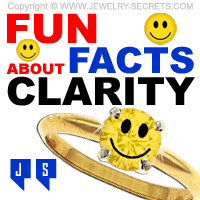
Brace Yourself…
This is a Fun Post!
As Fun as Clarity can be… :)
The Truth is, Diamond Clarity and Diamond Inclusions can be Fun, Interesting and Intriguing. It’s all in how you look at it. I find it Fascinating.
Hence the Reason for this Post
When we Talk about Clarity, we are Talking about the Inclusions (Flaws and Imperfections Inside and Outside) that Help Determine the Clarity Grade of a Diamond. The more Inclusions you have, the Lower the Diamond Grade. So, in other Words, the more Inclusions that a Diamond has, the more Undesirable, Unappealing and Cheaper that a Diamond becomes. Most people Strive for Fewer Inclusions. Fewer Flaws make a Diamond Sparkle more and also makes it more Beautiful.
Below are Facts and Trivia about Clarity that most people do not know. Curious Bits and Pieces that may make you want to look at Clarity a little Closer.
So grab a Jeweler’s Loupe or a Microscope and let’s jump in…
I give you, Fun with Clarity and Inclusions!
Inclusions can make a Diamond look White
Sometimes Diamonds will be so Full of Inclusions and Flaws (Usually an I2 Clarity or I3 Clarity) that the Entire Stone looks White like a Piece of Salt. People often Mistake this White looking stone for a Diamond Color that is White and think that is Good. This is Not the Case. Magnify any Diamond Before you Buy it. That White Diamond could be a Very Poor Cloudy Clarity, one of the Worst on the Market!
Inclusions can Weaken a Diamond
The more Inclusions or Flaws that you have Inside the Diamond, the Weaker that Diamond becomes. If you have Big Flaws, Cavities or Fracture Lines that Run through the Stone, it could make your Stone Vulnerable and Easier to Break. Plus, having Nicks or Chips around the Outside of the Stone can Weaken the Stone and make it Chip Easier as well. Always be Cautious when Dealing with Diamonds that have a lot of Inclusions, or Large Inclusions. One Good Whack and that Diamond could Crack!
Small Carat Weights Hide Inclusions
It’s True, the Smaller the Carat Weight of a Diamond is, the Harder it will be to See the Flaws and Imperfections in the Stone. A 20 Point Diamond could look Great with a Clarity of I2, but if you looked at a 1.00 Carat Diamond with a Clarity of I2, you would see a World of Difference. The Bigger the Stone, the more the Inclusions will stand out and get Noticed. So when you get into Large Carat Weights, you’ll have to Pay more Attention to Clarity.
50% of Diamond Clarity is One Clarity Range
This will show you how Scarce Good Quality really is. Half of all the Diamond Clarities that you see on the Market are from One Clarity Range:
I Clarity
I Clarity means Eye-Visible Inclusions, or Imperfect. If you look at an I Clarity Diamond, chances are Very Good that you’ll see Inclusions and Flaws with the Naked Eye (No Loupe Needed). So Half of all the Diamonds in the Jewelry Stores will be I Clarity. I Clarity is made up of 3 Clarity Grades (the only Clarity Range that has 3 Grades): I1 Clarity, I2 Clarity and I3 Clarity.
Diamonds can be Industrial
Diamonds that have a Lower Clarity Grade than I3 Clarity are Classified as Industrial Diamonds. These are Diamonds that are used for Machinery, Drilling and Tools (like the Dentist Drill). Industrial Diamonds also help Cut other Diamonds into Polished Masterpieces.
Inclusions can be Triangular
Some people get Very Lucky and have what is called “Trigons” on the Side of their Diamond. Trigons are Triangular Growth Patterns that Demonstrate Exactly how a Diamond Grows. These Triangular Stacks (looks like a Pyramid) of Diamond DNA often form on Naturals (Raw Unpolished Diamond Areas) around the Girdle or Facets of a Diamond. They are a Fascinating and Wonderful Treasure to Find.
Diamond Clarity can be Improved
Did you know that you could take a Diamond that is Filled with Huge Black Carbon Spots and basically make the Inclusions Disappear? You can. It’s called Laser Drilling. Laser Drilling is exactly what is sounds like. They take a Laser and Drill down into the Diamond and literally Burn (with Acid) the Inclusions out. Sadly, this leaves a Tunnel Hole in the Diamond and also Leaves a Cavity Void in the stone.
Often, they will also Fill that Hole and Tube with a Clear Substance (called Fracture Filling) that helps Blend the Cavity in Better and makes the Stone more Durable. Laser Drilling and Fracture Filling is fine as long as you know that the Diamond has been Altered. If you Buy a Diamond and this Filled and NOT Disclosed, then it’s Fraud. This is another Reason why you should always Scope a Diamond well Before you Buy it.
SI2 Clarity is Different from the Rest
SI2 Clarity is the one Clarity Grade that is Different from all the Rest. And for one Very Good Reason… SI2 Clarity should look Clean from the Top View (looking Straight Down into the Diamond), but may have Visible Inclusions if Viewed from the Side. SI2 Clarity is the Borderline Clarity that Separates Invisible Inclusions (to the Naked Eye, you’ll need a 10x Jeweler’s Loupe) with Visible Inclusions (Visible to the Naked Eye). This is the Most Questionable Clarity and should be Scrutinized Well. Some Jewelers will try to pass off an I1 Clarity Diamond as an SI2, which is also a Good Reason to only Buy GIA Certified Diamonds! The Diamond Report will tell you if it’s really an SI2 or if it’s an I1 Clarity! :)
Inclusions Never Change
Inclusions and Flaws will never Grow, Shrink, Move or Change. Inclusions inside of a Diamond are like Fingerprints to people. They are there for Life and will Never Change. This is why they are the Best Way to Identify a Diamond. If you Memorize your Inclusions Today (under a Microscope), 80 years from now you can Microscope your Diamond again and the Inclusions will Still Look the Same. If you want to keep yourself from getting Ripped Off (like getting your Diamond Switched), learn where your Inclusions are and what they look like. :)
Low Clarity can be More Beautiful
A Diamond Filled with Inclusions can be more Beautiful than a Higher Clarity Diamond. Why? Because Clarity is just one of the 4 C’s that Determine the Beauty of a Diamond. You still have to take into Consideration other things like Cut, Color and Carat Weight. So a Diamond that is I1 Clarity could look better than a Diamond of VS Clarity, if it’s Cut Better and has a Better Color! :) And that’s really nice to know.
Diamonds are a Fun House
Diamonds act just like a Fun House full of Mirrors. Where the Bottom of the Diamond comes to a Point (the Pavilion), this Area Creates a Fun House Effect. If an Inclusion or Flaw falls too close to the Bottom of the Stone, it can be Reflected and Mirrored all around the Diamond making it look like it has More Inclusions than there really are. One Inclusion could look like 8. Interesting eh?
Out of Focus Flaws
You can Microscope a Diamond and not see any Flaws even though it has some. How is this? It’s all because of Depth and Focus. When you Microscope a Diamond, you don’t see the Entire Diamond all at once. You only see the Part that you are Focused on. It could be the Bottom of the Diamond, the Middle, or the Top of the Stone. To see everything that is inside of a Diamond you’ll need to Adjust the Knob on the Microscope and move the Lens up and down to view all the Inclusions inside the Stone. It’s also a Great Idea to turn the Diamond Sideways to View from that Angle. That way the Inclusions aren’t Masked by the Sparkle and Shine of the Stone.
Clarity is Inside and OUT
Most people are under the Impression that Clarity are the Flaws Inside of a Diamond. But, it is also the Flaws OUTSIDE of the Diamond as well. Things like Trigons (listed above) Naturals, Grain Lines, Chips and Nicks can be on the Surface of the Stone. Even a Diamond rated Internally Flawless (IF – the Second Best Clarity Grade there is) can have Flaws on the Outside of the Stone. So while you may be Focused on the Guts of the Stone, you may want to Shift your View to the Outside to see what other Flaws you Find.
Where are the Flawless Diamonds?
Flawless Diamonds (FL – the Best Clarity Grade there is) really are a Scarcity. They are Very Hard to find and are almost never found in a Jewelry Store. The reasons being are simple: they are Extremely Expensive, Very Rare, and most people would never wear a Perfect Stone for everyday use. Flawless Diamonds are usually Collectors Items that never Hit the Market. And if they do, it will surely Cost you an Arm and a Leg. :)
Each Step in Clarity can be Grand
Moving up one Clarity Grade in the Charts could add a lot of Money to the Price Tag. In fact, it could Add Hundreds or Thousands…
I did a Quick Price Search on James Allen to find these Prices at the day of this Post. Check out the differences in Price when all you do is move up one Clarity Grade. Note that the Carat Weights are Almost Identical, along with the Color being G and all Diamonds being Excellent Cut, Polish, and Symmetry (with no Fluorescence). Just look at the Jump in Price…
| CARAT WEIGHT, CLARITY, COLOR, CUT, CERTIFIED | PRICE | VIEW |
| 1.01, I1, G, EXCELLENT, GIA | $3,490 | VIEW |
| 1.03, SI2, G, EXCELLENT, GIA | $4,510 | VIEW |
| 1.00, SI1, G, EXCELLENT, GIA | $5,660 | VIEW |
| 1.01, VS2, G, EXCELLENT, GIA | $6,830 | VIEW |
| 1.04, VS1, G, EXCELLENT, GIA | $7,360 | VIEW |
| 1.02, VVS2, G, EXCELLENT, GIA | $8,470 | VIEW |
| 1.00, VVS1, G, EXCELLENT, GIA | $8,980 | VIEW |
| 1.03, IF, G, EXCELLENT, GIA | $9,980 | VIEW |
Not Too Bad…
There’s a Difference of $6,500 Hundred between the Top and the Bottom Diamond Quality…
Pocket Change eh?
10x is the Power to Use
Diamond Clarity is Graded by using 10x Magnification. 10x Power is what ALL Jewelers, Gemologists and Certified Diamontologists use to Grade Diamonds with. 10x is Viewing the item at Ten times Magnification. This is the Standard, this what you should use to Scope Diamonds with. If you went higher up in Magnification, say 20x or 30x, you would probably see more Flaws and Imperfections in the Stone. But just because you can see more at Higher Magnification doesn’t mean they count. Only Inclusions seen under 10x Power are listed and Graded on the Diamond Reports, Diamond Plots and Diamond Appraisals. 10x helps Determine what Clarity Grade your Diamond gets!
I1 does NOT mean 1 Inclusion
You would be Amazed at the amount of people that believe that an I1 Clarity Diamond has only 1 Inclusion in it. They think the Numbers beside the Grade stand for the Amount of Inclusions and this is Totally False. An I1 Clarity Diamond could have TONS of Inclusions and Flaws inside the Stone. And an I2 Diamond on the other hand could have just 1. You never know. Every Diamond is Different and Grades are Not Determined by just how many Flaws are Inside (or Outside) of the Stone. Diamond Graders also take into Consideration things like Size, Color, Visibility, and where it’s Positioned. I1 Clarity Diamonds could have just one Flaw… But chances are Good, they’ll have many, many more.
Most People can’t see Inclusions
This is so True. Most people don’t Notice Inclusions in a Diamond unless the Inclusions are Really Big and Very Noticeable. Black Carbon Spots (that look like Pepper) are the Easiest to Spot because of their Contrast with the Stone. People usually see Black Spots easily, but White Inclusions, Cavities, Lines and Pinpoints will go Unnoticed unless you view them Underneath a Microscope (10x of course).
Diamond Plots do NOT show ALL Inclusions
If you look at a Certified Diamond Report and view the Plot of the Stone, you’ll see hand Drawn Marks that Show you what Type of Flaws you have in your Stone and where they are located at. This is all Good, except sometimes Not all Flaws and Inclusions are Marked on the Plot.
Often, if the Stone has a lot of Flaws, or Overlapping Flaws, the Appraiser will Not Show them all but just list them under the Comments. The Comments are usually underneath the Reporting Area that lists Carat Weight, Color, Clarity, and Cut. Under the heading of Additional Grading Information you’ll also see things like Polish, Symmetry and Fluorescence. Below that is where the Comments go. This Comment section is where you’ll see things like Trigons, Naturals, Grain Lines and Additional Clouds or Pinpoints. There may be more in your Stone than you know… Better get the microscope out…
SI3 Clarity is NOT Recognized
If you look at the Diamond Clarity Chart as Devised by GIA back in 1949, you’ll see NO Clarity Grade of SI3. Even though SI3 is a Clarity Grade you’ll find on the Market and Sold in Jewelry Stores today. SI3 is Supposed to close the Gap between SI2 and I1 Clarity Grades Better. But the problem is, it only Adds More Confusion. Some Jewelers use this Grade to up Sell I1 Clarity Diamonds and call them SI3 instead. SI3 Clarity sounds like “SI Clarity” and makes the Diamond Sell Better. Plus, Jewelers can often get More Money for this in between (Not Totally Accepted) Clarity Grade.
My View is this:
Until GIA (the people that created the Diamond Grading System used all across America) acknowledge SI3 as a true Clarity Grade, then I would Pass these up and NOT Buy them!
Clarity is #1
Clarity is the Number one C of the 4C’s that people Focus on. They are more Interested in the Clarity of the Diamond than Anything and for a couple of Good Reasons. People can see Inclusions, and they can Understand the Concept better. It’s hard to see the Slight Differences between Color (unless it’s Really Yellow), and it’s Very Tough to Judge Diamond Cut because all Diamonds pretty much look the Same to an Untrained Eye. But Clarity is Easy for people to see (with their Eyes and under a Scope) and Easy to Comprehend, so that’s what most people Concentrate on First.
Inclusions can HIDE
If you Buy a Diamond that is already Mounted, it could have Flaws Inside (and Outside) of the Stone that you may not see. Even under a Microscope, and even if you Adjust the Focus of the Depth… You May Miss some Inclusions, Chips, Nicks or Cracks that could be Hidden. How? The Mounting can Hide them.
Many times Jewelers will Cover up Small Flaws in the Diamond by Putting a Prong over them or Setting them in a Mounting that Covers up these Imperfections (like a Bezel Setting). This is Not a Bad Practice by Jewelers, in Fact, it’s Good that they can Help Mask Flaws that could be Unsightly. But the Truth Remains, they may not Disclose the Fact that there are Additional Flaws that are Covered up or Unseen. This is why it’s always Good to Buy your Diamond Loose! Buy the Diamonds Loose and Certified and have them set later in a Mounting of your Choice. That way you can See and View the Entire Diamond Inside and Out and not have the Inclusions Play Hide and Seek!
Inclusions are a Good Thing
Now don’t get me Wrong, I’m not saying that I Love Inclusions, I’m just saying I don’t mind some. To me, if you have a Diamond with a Few Identifiable Inclusions or Characteristics in it, you will be able to Identify your Stone Better. And that’s a GREAT Thing!
If you look at a Diamond that has NO Flaws, then you won’t be able to tell the difference between that and a Cubic Zirconia (Man-Made Diamond Without Flaws). If you look at a Diamond under a Microscope and see nothing, it won’t help you in the least. I would rather see some Minor Flaws (like in a VS Clarity Diamond) so I can Identify and Pick out my Diamond in a Crowd. If you Memorize the Inclusions in your Stone, you will always know that you got your Diamond back from the Jeweler. Inclusions CAN be Good if you use them to their Full Potential.
Chipped Diamonds lower Clarity
If you Chip or Nick your Diamond, it will actually affect its Clarity Grade. It could take the Clarity down a Notch and could even make it Hard to Sell if you Chip or Nick it Bad Enough. If you Hit your Diamond Accidentally, it’s not a Bad Idea to take it into a Jeweler and have them Check it out. It’s also a Great Idea to make sure you Have your Diamond Fully Insured just in case you do Chip it. A fully insured Diamond can often be Replaced Free of Charge. Is your Diamond insured?
7 Clarities look the Same
It’s almost Crazy if you think about it, but it really is the Truth. 7 of the 11 Clarity Grades in the Diamond Clarity Charts look the Same to the Naked Eye. Under a Microscope you’ll see a Difference for sure, but to the Naked Eye, just looking at the Stones they will all look the same. This is also saying the Carat Weight, Color and Cut are all the same (for that can change their Appearance). But for the Inclusions, they will all be Microscopic. You will have to view them under 10x Power to see the differences between them.
Clarity Grades:
Flawless (FL), Internally Flawless (IF), VVS1 – VVS2, VS1 – VS2, and SI1 will ALL LOOK THE SAME!
Unless you can see Microscope Inclusions, you’ll need something other than your Eyes to tell them apart.
ALL Clarities are Rare
Every single Clarity Grade that you find on the Market is Rare. Very Rare. In fact, all 11 Clarity Grades fall within the top 15% of all the Diamonds Mined in the World today. That means 85% of all Diamonds Dug out of the Earth are Industrial Diamonds or worse. That makes even the Poorest Clarity (I3 Clarity) rare. Which also is the Reason why Diamonds hold their Value so well. The top 15% is a Good Place to be. :)
Eye-Clean really is Eye Clean
Eye-Clean is a Term that Jeweler’s use to Describe Diamonds that are SI2 or Higher in Clarity.
It basically means that you can look at a Diamond with your Naked Eye and see No Visible Inclusions in it. If you can’t see any Flaws, it’s an Eye-Clean stone!
The Last Word
Clarity and Inclusions are a Fascinating World. I Highly Advise anyone to head on out to a Jewelry Store and Scope some Diamonds today. It’s Amazing what you can find once you View a Diamond at 10x Magnification.
You can understand Clarity more by Comparing Stones and Viewing all the different Clarity Grades.
Once you see the Flaws and Inclusions you’ll Appreciate Quality Better and also Comprehend why some Diamonds are Priced Thousands of Dollars more than others.
Clarity Really Does Make A Difference!
Cheers! :)


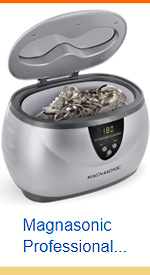

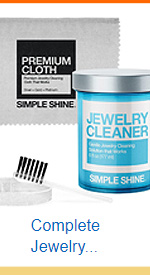
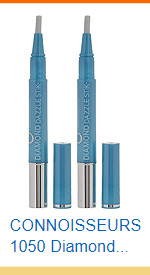

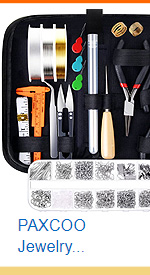
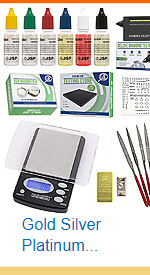
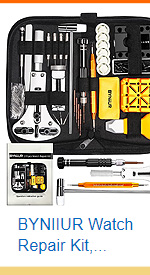
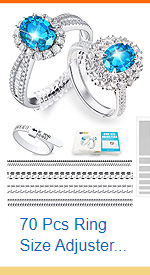
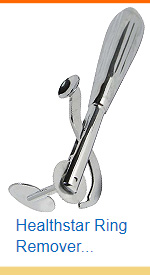
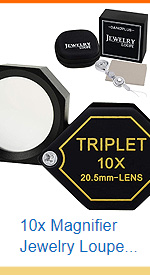
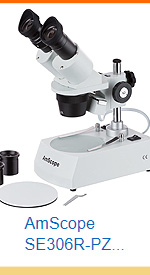




Leave a comment